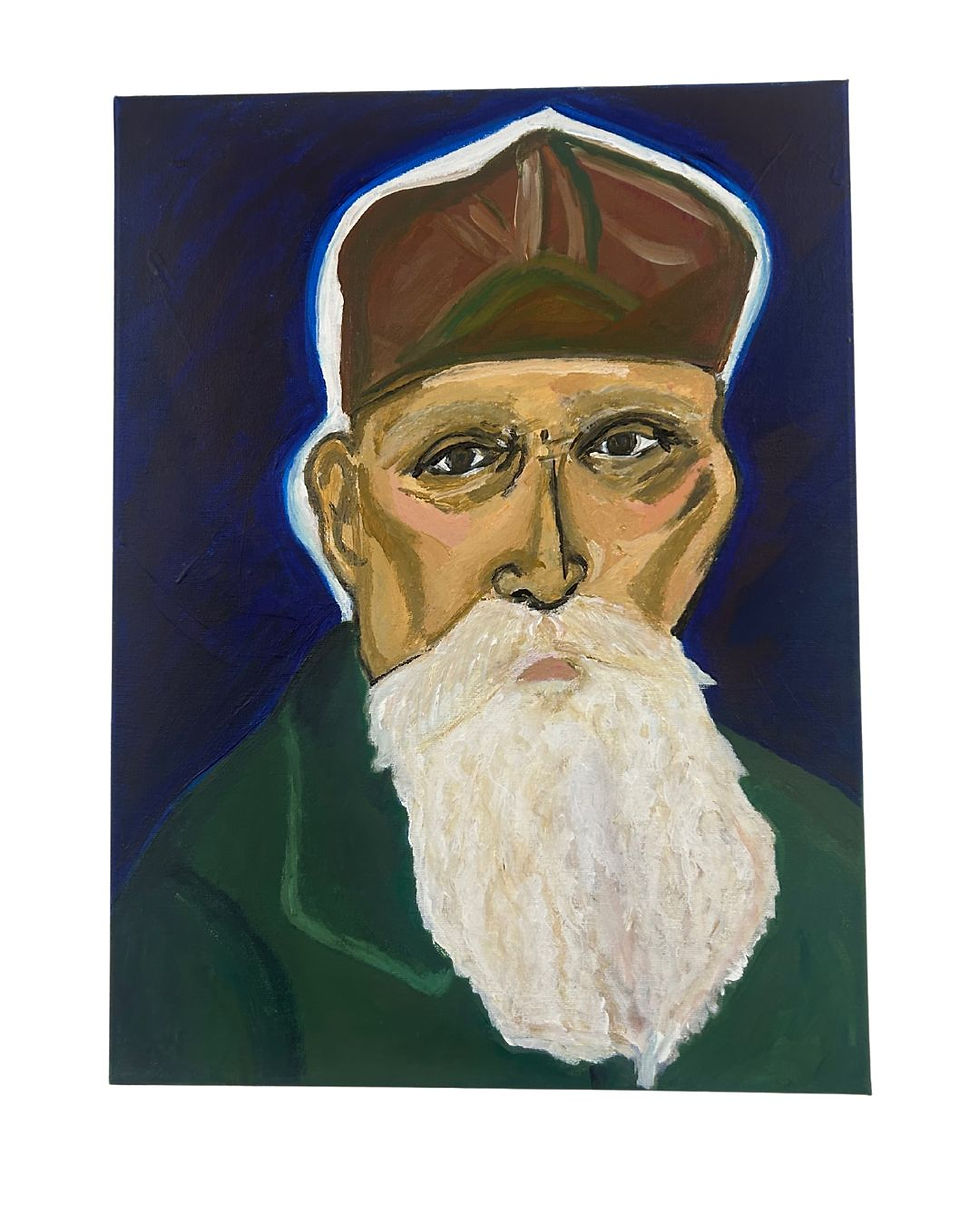Nicolas Roerich
- kira9044
- Mar 20
- 4 min read

Nicholas Roerich
Biography
Nicholas Roerich was born on October 9, 1874, in Saint Petersburg, Russia. A polymath, Roerich was a painter, writer, archaeologist, philosopher, and spiritual teacher whose work bridged the worlds of art, culture, and spirituality.
Roerich studied at the Imperial Academy of Arts and quickly gained recognition for his symbolic and mystical paintings, which often depicted landscapes, spiritual themes, and ancient cultures. Throughout his career, Roerich was deeply inspired by Eastern philosophy, Theosophy, and Russian Orthodoxy, integrating these influences into both his art and spiritual teachings.
In the early 20th century, Roerich embarked on extensive travels through Central Asia, India, and Tibet, where he studied ancient cultures, languages, and spiritual practices. His experiences in these regions greatly shaped his worldview and reinforced his belief in the unity of humanity, peace, and the importance of cultural preservation.
Roerich, along with his wife Helena Roerich, played a pivotal role in the creation of the Roerich Pact—an international treaty signed in 1935 to protect cultural heritage during times of war.
Nicholas Roerich’s spiritual teachings emphasize the importance of art as a vehicle for spiritual growth, the pursuit of wisdom, and the harmonious evolution of humanity. He passed away on December 13, 1947, leaving behind a legacy of art, culture, and spiritual philosophy.
Core Teachings
1. The Pursuit of Spiritual Evolution
Roerich believed that humanity is on a path of continuous spiritual evolution. The ultimate goal is to develop one's inner divinity and to contribute to the progress of civilization through wisdom, art, and culture.
2. The Power of Art as a Spiritual Path
He viewed art not merely as an aesthetic pursuit but as a sacred act—a way to express divine truths and to awaken the soul in oneself and others. Art becomes a tool for enlightenment and spiritual growth.
3. The Harmony of Science, Art, and Religion
Roerich taught that science, art, and religion must work together in harmony to foster human advancement. He believed that progress in one area supports progress in the others.
4. The Importance of Cultural Preservation
Roerich advocated for the protection of cultural monuments, heritage, and traditions, believing that preserving cultural knowledge is essential for humanity’s spiritual and intellectual growth.
5. The Agni Yoga Philosophy (Living Ethics)
Along with Helena Roerich, Nicholas developed Agni Yoga, a spiritual teaching focusing on the practical application of spirituality in everyday life, encouraging people to live ethically, pursue truth, and strive for higher consciousness.
Practical Practices to Incorporate Nicholas Roerich’s Teachings into Life
1. Integrate Art into Your Spiritual Practice
Create art with intention—whether painting, drawing, writing, or any form of creative expression—use it as a tool to explore your inner world and connect with the divine.
Art Meditation: Spend time in meditation while contemplating art that inspires you. Reflect on the emotions and spiritual truths it conveys.
2. Practice Agni Yoga (Living Ethics)
Agni Yoga is about applying spirituality in everyday life:
Self-discipline: Commit to daily practices like meditation, self-reflection, and acts of kindness.
Inner Fire (Agni): Cultivate inner strength and determination by facing challenges with courage and integrity.
Selfless Service: Serve others without expecting rewards, fostering compassion and unity.
3. Pursue Wisdom through Study
Study philosophy, spirituality, and the arts to develop a deeper understanding of yourself and the world.
Read works on Eastern philosophy, Theosophy, and the teachings of Roerich and his wife Helena to expand your knowledge.
4. Cultural Preservation in Daily Life
Support cultural programs, museums, and educational initiatives that protect and promote heritage and art.
Learn about and respect cultural traditions from your community and others, recognizing their role in shaping humanity’s spiritual journey.
5. Meditation on Harmony
Daily, spend 10-15 minutes in quiet meditation, focusing on the intention of harmony between science, art, and religion in your life and the world.
Reflect on how you can balance logic, creativity, and spirituality in your decisions.
6. Service to Humanity
Volunteer for causes that aim to improve society, such as education, environmental conservation, or cultural preservation.
Small acts of kindness and service align with Roerich’s teachings of uplifting humanity.
7. Study and Reflect on Roerich’s Art
Analyze the spiritual symbolism in Roerich’s paintings, many of which depict mountains (representing spiritual ascent), light, and ancient spiritual figures.
Use his art as a mirror to your own spiritual aspirations and as inspiration for your own spiritual journey.
Legacy & Influence
Nicholas Roerich’s legacy continues through his art, the Roerich Pact, and the Agni Yoga Society, which preserves and promotes his teachings. His vision of the unity of art, culture, science, and spirituality remains influential in both the spiritual and artistic communities.
Roerich’s belief in the evolution of consciousness through cultural and spiritual progress has inspired generations to seek higher truths through both intellectual pursuits and creative expression.
“The goal of life is self-perfection.” — Nicholas Roerich
Final Thought:
Nicholas Roerich’s teachings remind us that spiritual evolution is a collective endeavor—where art, science, and culture are essential tools for awakening humanity’s higher consciousness. By integrating creativity, service, and ethical living into our lives, we contribute to the progress of the world and our own spiritual growth.



Comments